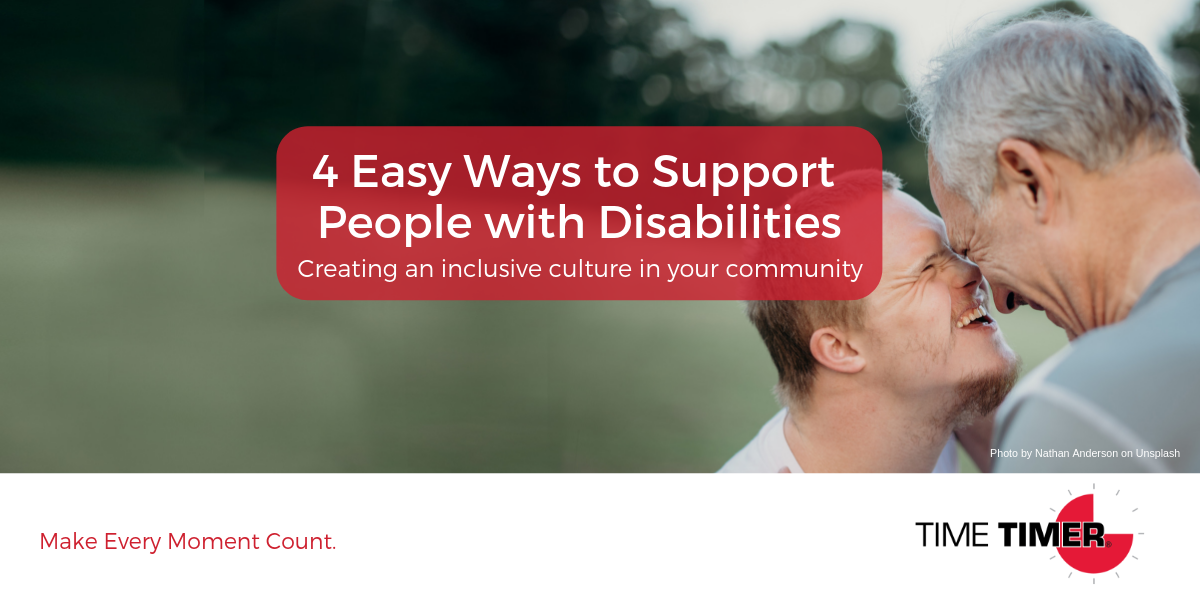Every community includes people with disabilities, and you may find yourself wanting to reach out and get involved. But how can you make a difference? And encourage your family and community to be more inclusive? We have four ideas for supporting people who have disabilities, and we think you’ll likely build some new relationships in the process.
1. Support businesses that hire people with special needs
Step one: Show your support by actively spending your money with inclusive businesses. Travel an extra mile or two to the local hardware store where you’ve noticed people who have disabilities working. Or take a few minutes to figure out which larger companies and brands make disability inclusion a priority. A good place to start? The Disability Equality Index list of Best Places to Work. You’ll find everything from drugstores to movie theaters on the list. Another easy research method: Follow the #RespectTheAbility hashtag on Twitter for real-life hiring stories.
Once you’ve found a few new businesses to support, tell them why you’re a new or returning customer. Say a few words to the manager in person or give kudos to a larger company on social media. If you’re not into public praise, send a personal note or email letting a company know that you make it a priority to support businesses with inclusive workplaces.
2. Volunteer your time and skills with a local organization
There’s a long list of non-profits and other organizations that help people who have disabilities. Find one in your community and reach out about one-time or ongoing volunteer opportunities. You might start by researching groups that support a community where you have a personal interest or experience—whether that’s autism, dyslexia or mental healthcare.
Not sure where to start? Schools, hospitals and social services organizations are all good bets and easy to find in most communities. If they don’t have a current need for volunteers, you might ask if they can point you to a local organization that would welcome your contributions.
3. Embrace disability inclusion for family activities
Live by example. Take a look at all the activities your family participates in—from hosting a backyard barbecue to casual outings with friends. Do you make an effort to include people you know with disabilities? And people on the edges of your social circle? Make it a family policy to encourage participation—and extend warm invites—to people with disabilities.
Once you’ve made that commitment, look around and start thinking about any barriers that might prevent someone who has a disability from participating in that dinner out. Did you choose a restaurant that’s easily accessible? Is there a noise level that might make it difficult for someone with hearing loss to join in the conversation? Begin thinking through how you might eliminate these potential road blocks for future activities.
4. Talk to your children about disability, inclusion, and equality
Kids are curious, so it’s only natural that they notice differences—whether that’s someone else’s accent or abilities. It might be tempting to teach your child to ignore differences, but the real key is to foster an open and thoughtful discussion. If your child asks about someone at the grocery store with a wheelchair, allow them to ask questions and answer in an honest, thoughtful way. Be honest if you don’t know the answer to something your child asks.
Once you have an ongoing dialogue, make sure you talk about inclusion, equality and acceptable behavior, too. You’ll need to coach your kids—leading by example—about appropriate language and actions. Talk about equality among people across a range of abilities and including people who may have different abilities than them. Prompt your kids to think about and identify similarities, too.
Time Timer believes in creating products that truly help people of all ages and abilities conquer time. While time can be a challenge for people who have disabilities, we aim to provide intuitive and innovative solutions that can make a real difference. To learn more, visit timetimer.com/specialneeds.

